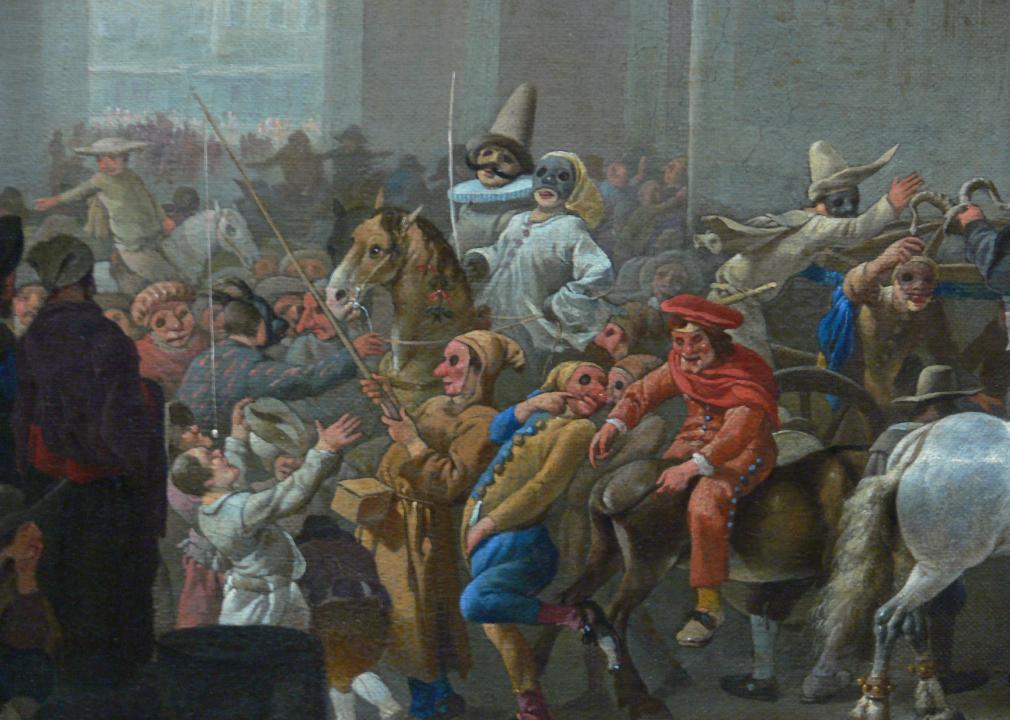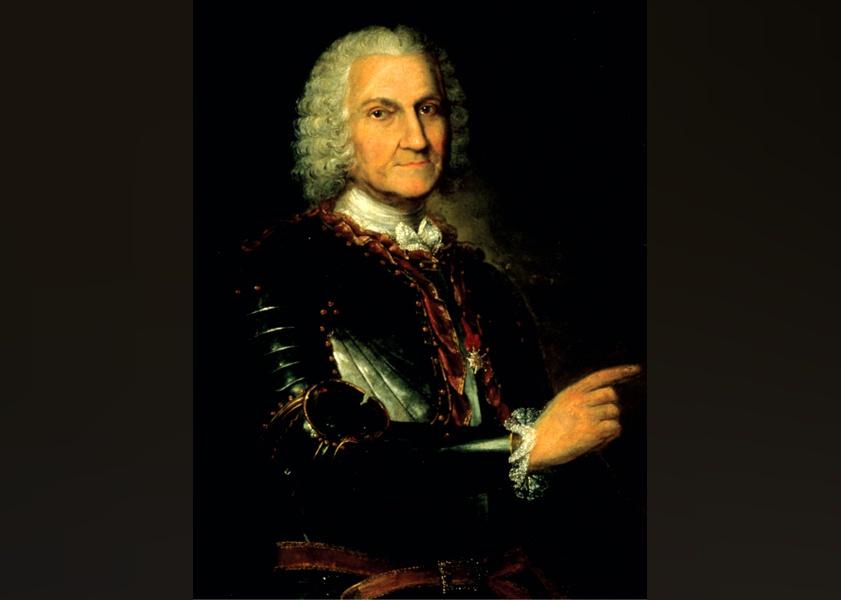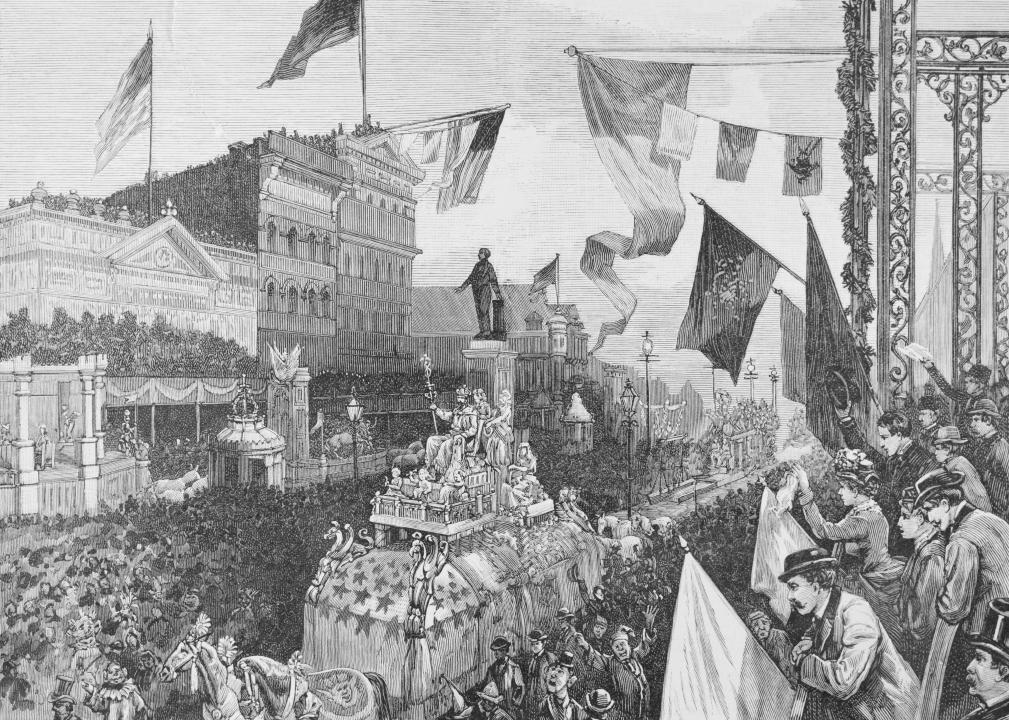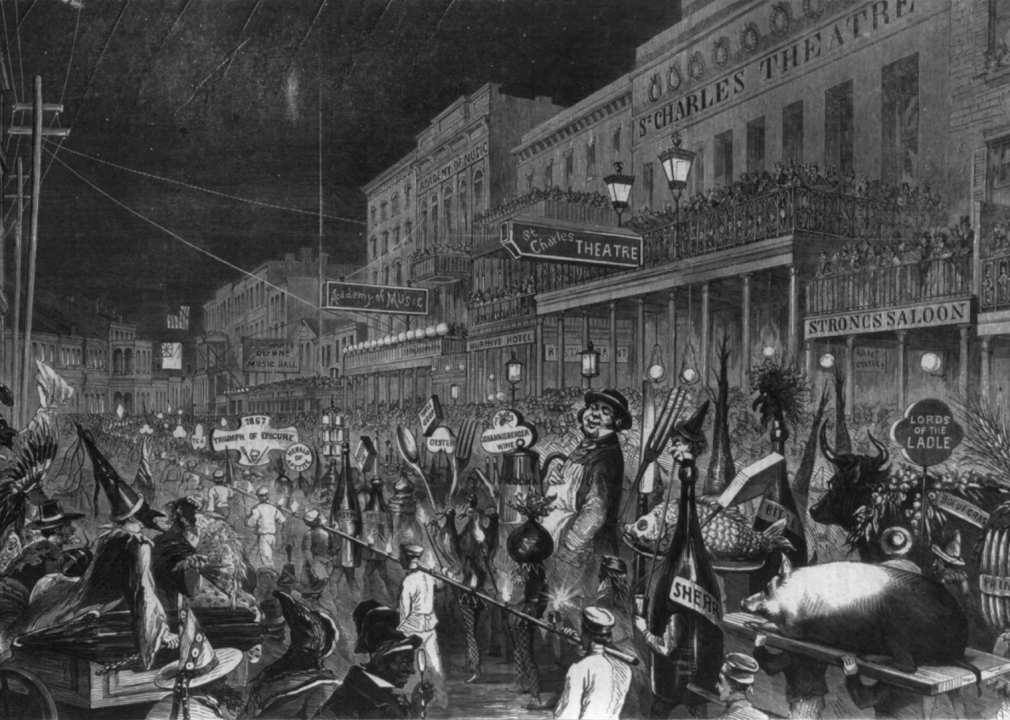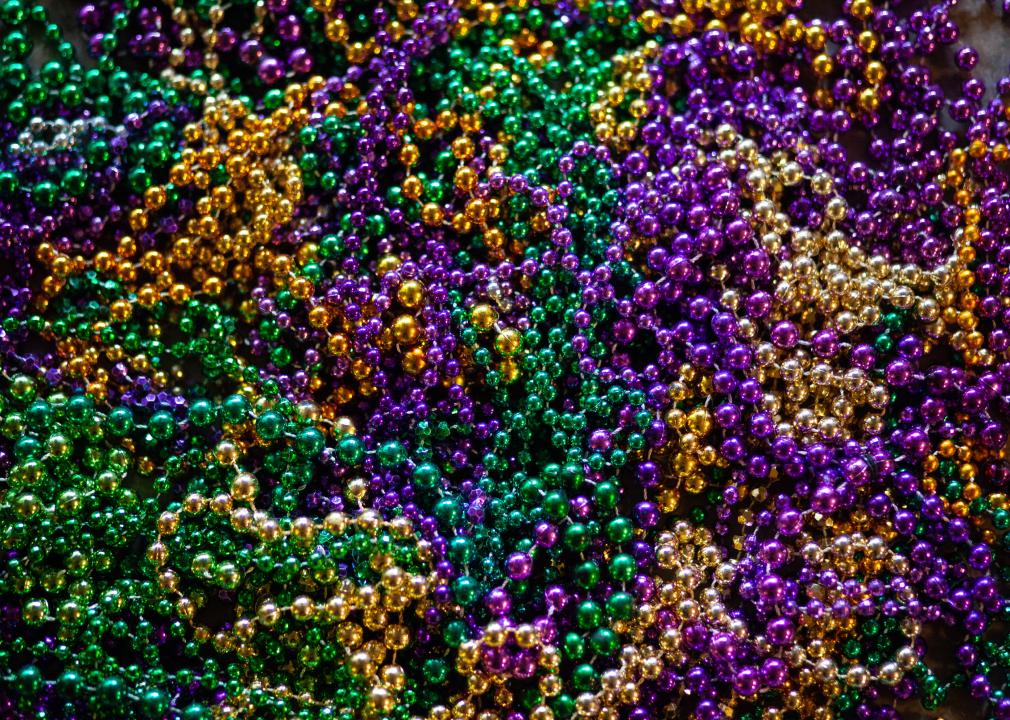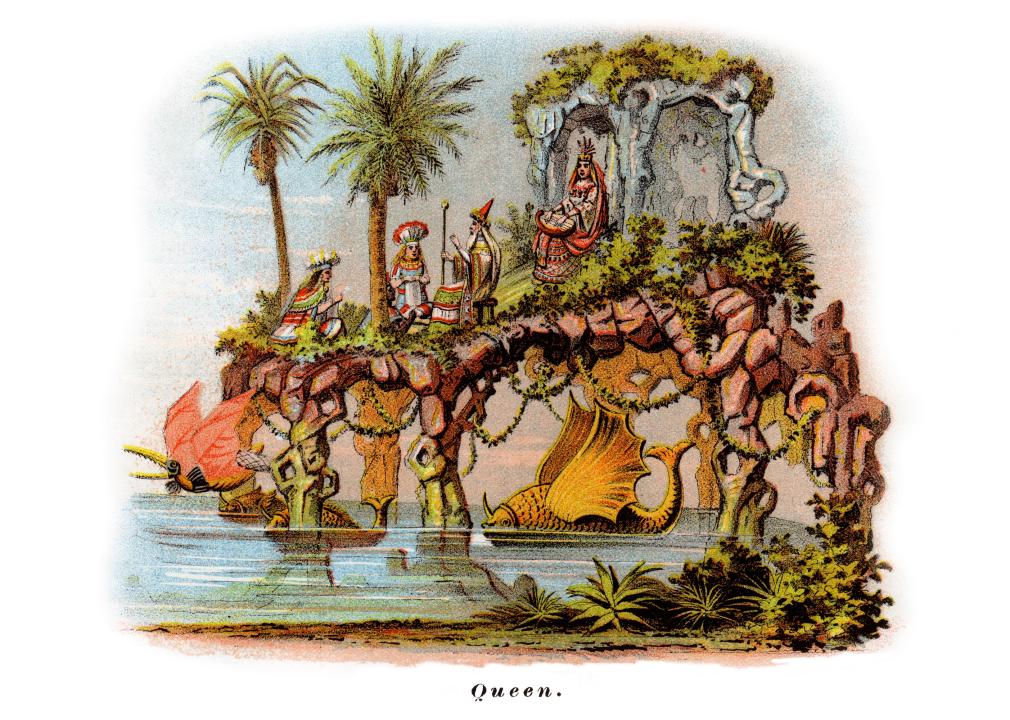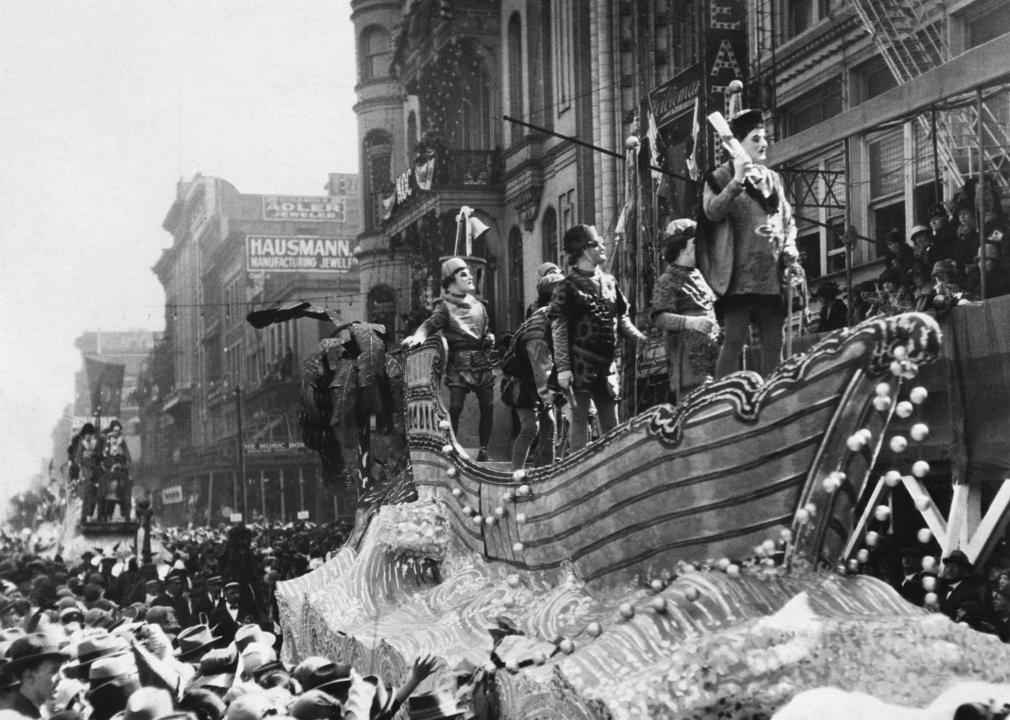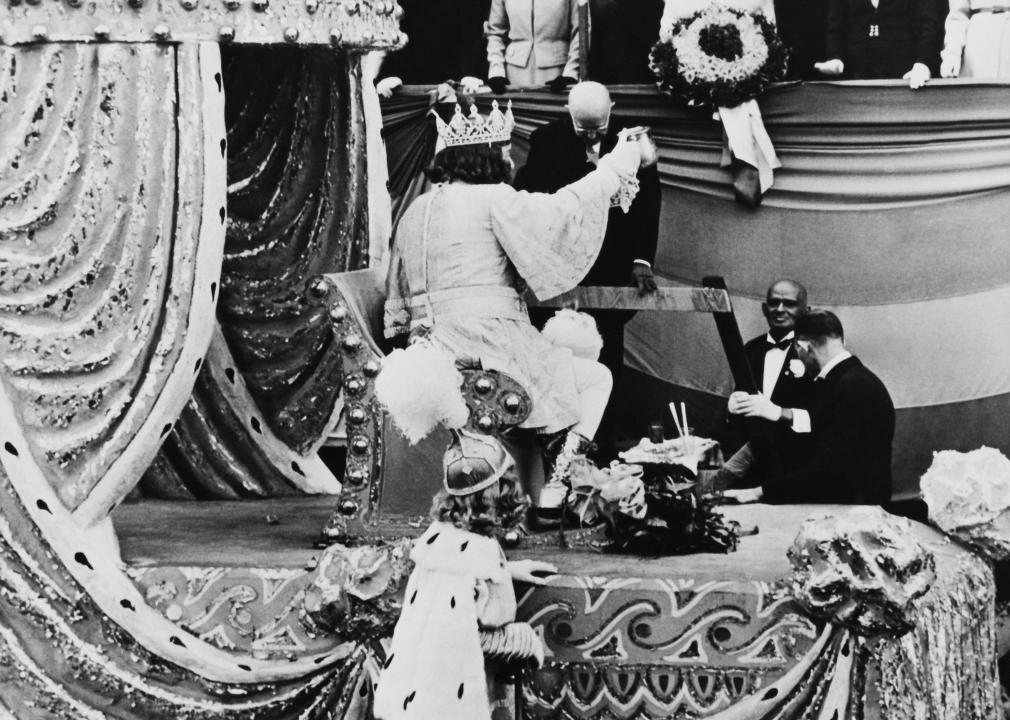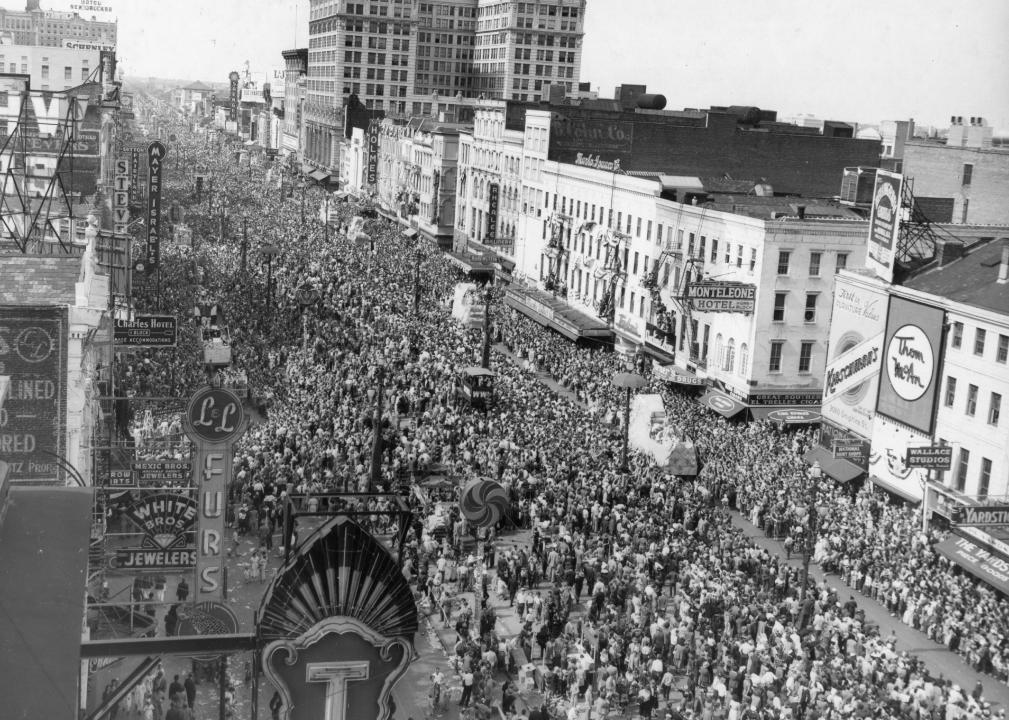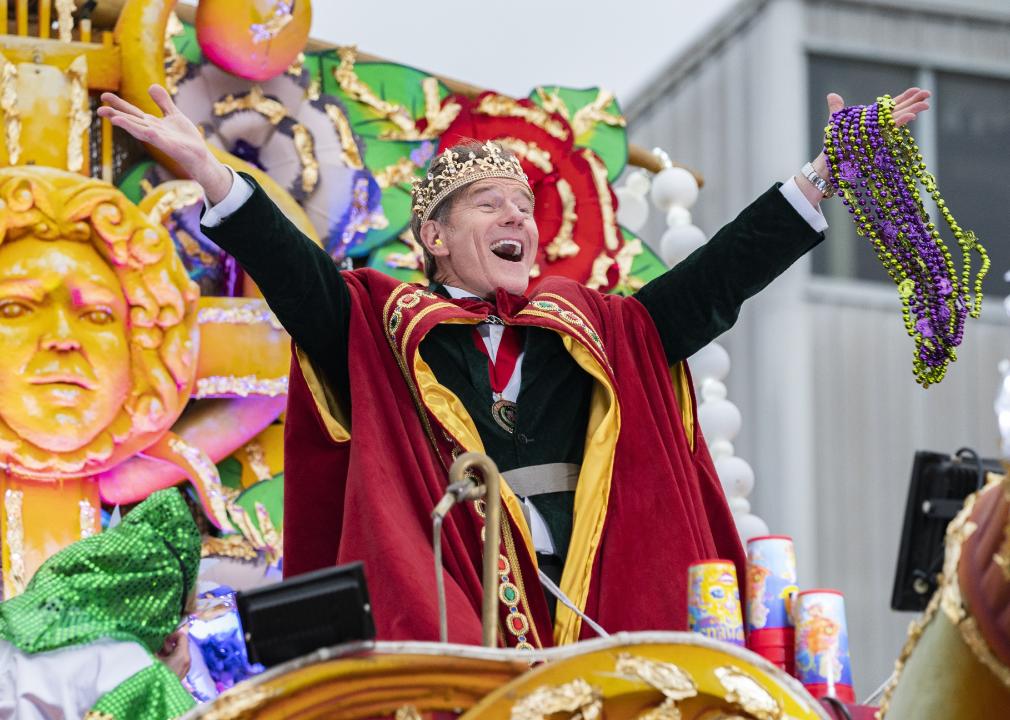History of Mardi Gras
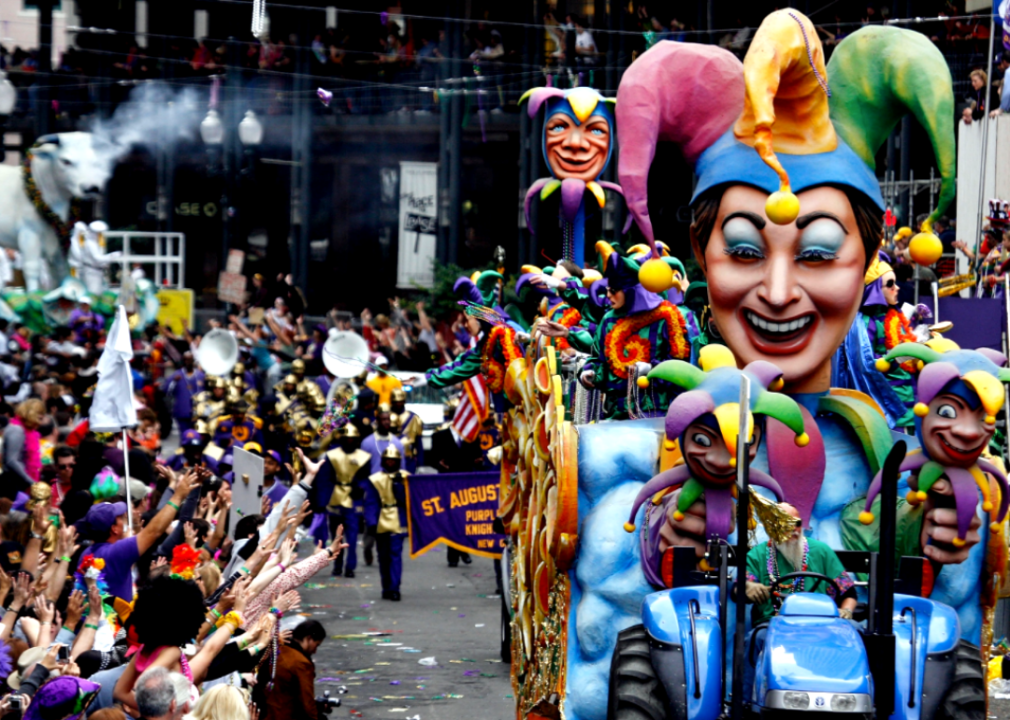
Chris Graythen // Getty Images
History of Mardi Gras
The history of Mardi Gras originates in what is now Italy. Dating back thousands of years to pagan spring and fertility rites, the holiday grew into its present form in heavily Roman Catholic countries. Also known as Carnival in many parts of the world, the holiday takes place right before Lent and is all about celebrating before a season of fasting and penance.
In the United States, the holiday is centered in the city of New Orleans. Thousands of revelers pack the streets each year for a celebration that includes floats, masked balls, and general merriment. The holiday’s origins in the United States date back to even before American independence. As Mardi Gras has evolved throughout the years, many of its historical benchmarks have mirrored American society and geopolitical events, with the colors of Mardi Gras coming out of a visit from a Russian duke, for example, and the first African American king and queen of Mardi Gras crowned right before the civil rights movement.
Using primary and secondary historical sources, Stacker compiled key points in the history of Mardi Gras throughout the years. Click through for a closer look at where this holiday began and how it has evolved to keep up with the times.
You may also like: Libertarian, gerrymandering, and 50 other political terms you should know
![]()
Heritage Images // Getty Images
A medieval party
The origins of Mardi Gras lie in medieval Europe. Citizens in what is now Italy, particularly Venice, spent the weeks leading up to Mardi Gras engaging in all sorts of revelry and feasting that their daily lives did not typically allow. Typical religious inhibitions were abandoned, and people of different social classes mixed. What allowed them to do this? The traditional Mardi Gras masks they wore during the festivities and balls, which allowed them to act this way with relative anonymity.
Public Domain // Wikimedia Commons
Mardi Gras arrives in America
In 1703, the French Canadian explorer Jean-Baptiste Le Moyne de Bienville helped organize the first American Mardi Gras party. Based in Louisiana, de Bienville immediately began thinking larger after his first party. He organized a secret society centered around Mardi Gras, which was succeeded several years later by the Boeuf Gras Society, which lasted until the Civil War. Their signature act before the holiday? Parading a bull’s head through the streets.
Bettmann // Getty Images
Students on parade
In 1827, a group of students in New Orleans set the stage for what would become an enduring Mardi Gras tradition. Emulating what they had seen in Paris, the students wore colorful costumes and danced in the streets. Ten years later, their revelry inspired a grand transition. In 1837, the first Mardi Gras parade took place in New Orleans. To this day, Mardi Gras is marked in many places, particularly New Orleans, by a grand procession and parade with floats.
James E. Taylor // Wikimedia Commons
The Krewes come together
In 1856, the Krewes formed in New Orleans. This secret society of businessmen founded the Krewes as an organization dedicated specifically to celebrating Mardi Gras. They organized elaborate floats for parades, along with masked balls. Their work helped raise the profile of Mardi Gras in the city and beyond. Local newspapers even began reporting on preparations for the grand events well ahead of time, setting the stage for the multiple events and tourists alike who throng the city today.
Erin Faith Wyllie // Shutterstock
A color palette forms
In 1872, the Grand Duke Alexis arrived in America for a tour of the United States that happened to coincide with Mardi Gras. The Duke’s welcoming committee handed out beads that year that would have long-lasting significance. The beads were colored purple, green, and gold. These have been the colors of Mardi Gras ever since, and are still worn today by revelers in the streets and tossed from floats during parades. The colors have even been given special meanings: purple for justice, gold for power, and green for faith.
You may also like: Oldest national parks in America
Buyenlarge // Getty Images
The first queen of Mardi Gras
In 1871, the first queen of Mardi Gras took her throne. Emma Butler was chosen to be the first queen. Her king? A mysterious man known as the Lord of Misrule. The tradition of crowning a king and queen of Mardi Gras continues to this day.
Bettmann // Getty Images
Electric floats
In the late 1920s, electric floats began rolling through parades as horse-drawn carriages were now being powered by electricity. The first documented electric float was in Mobile, Alabama, in 1929. Electric floats meant that parades could move at a faster pace. It also meant that floats could become more elaborate, as they had more power facilitating their moving forward.
Keystone-France // Getty Images
First African American king and queen of Mardi Gras
In 1940, the first Black king and queen of Mardi Gras were crowned. Aline Jenkins Howard was named the queen, and Alex Herman crowned king. The duo was decked out in full regalia, including robes and crowns. The move was considered groundbreaking at the time, in an era before the civil rights movement. Today, many of the artifacts from that coronation are on display in a Mardi Gras museum.
PhotoQuest // Getty Images
The first televised Mardi Gras
In 1949, the first televised Mardi Gras aired. NBC affiliate WDSU carried seven parades and the local Iris ball. This meant that those who weren’t able to attend in person could still participate in some of the festivities. General Electric sponsored the broadcast. New Orleans broadcast journalist Mel Leavitt anchored the show and would become synonymous with the holiday for an entire generation.
Erika Goldring // Getty Images
COVID-19 halts Mardi Gras
The year 2020 would turn out to be an ignominious one for Mardi Gras. That year, thousands of partiers packed the streets in New Orleans. Their decision to do so created a COVID-19 superspreader event. In 2021, Mardi Gras festivities were put on hold, but in 2022, the city of New Orleans planned to go forward with Mardi Gras celebrations thanks to vaccinations and a waning virus.
You may also like: How well do you remember 1969?
